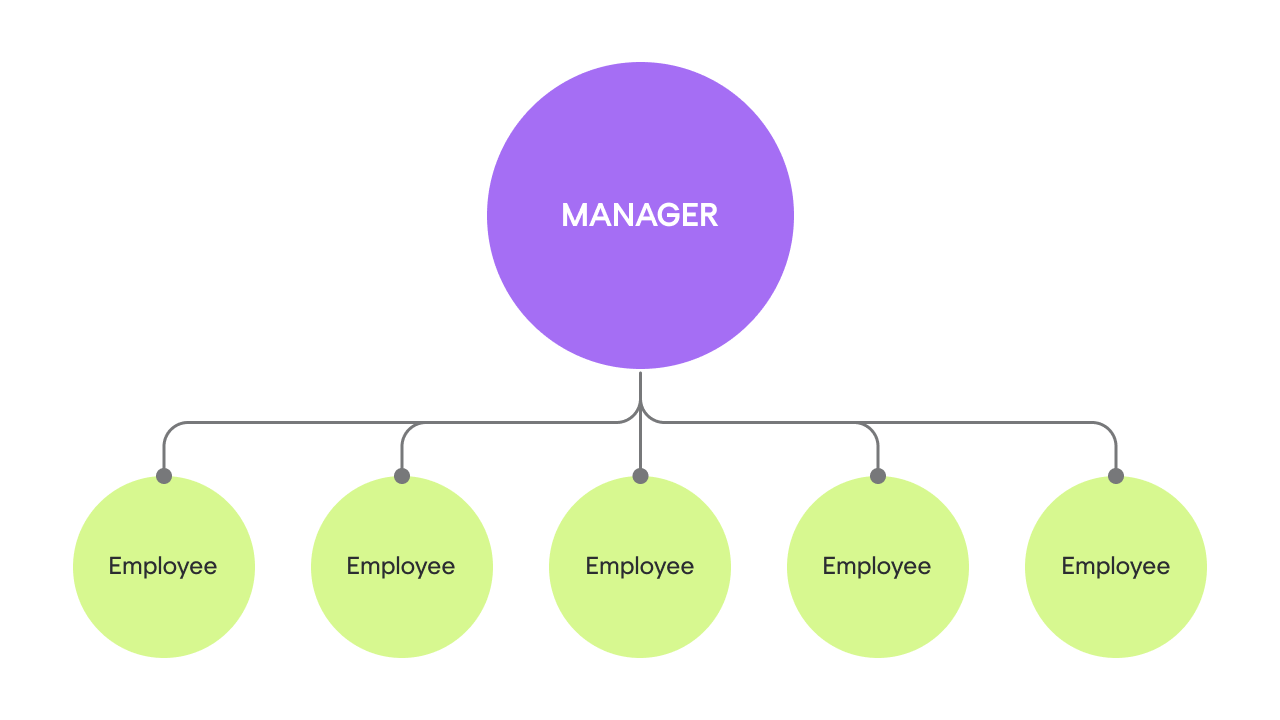October 9, 2025
By: Jordan Nottrodt Company culture means more than just setting up a ping pong table in an open-concept office space. Company culture represents how your business works, and it can actually have a big impact on business outcomes. “I used to believe that culture was ‘soft,’ and had little bearing on our bottom line. What I believe today is that our culture has everything to do with our bottom line, now and into the future,” said Vern Dosch, CEO at National Information Solutions Cooperative ( NISC ). And he’s right. Company culture isn’t some nebulous idea invented by wellness industry entrepreneurs to sell books and seminars to CEOs. Aligning your core values with your business strategy helps define your brand, both internally and externally. It also helps attract top talent and enhance employee engagement in a way that yields tangible results in terms of productivity and profitability. What is company culture? Company culture refers to a company’s core values, which are reflected in the attitudes, behaviors, and practices of its employees and the organization as a whole. Think of company culture as the heart of your organization, both physically and metaphorically; it signifies the qualities that your company values, and it affects every part of your business. The way your organization operates, both formally and informally, is reflected in its company culture. It encompasses how employees feel, their work environment, the company’s mission, goals, and expectations, as well as the various leadership styles within your organization. A strong company culture fosters a positive work environment, which enhances employee satisfaction, mitigates time-consuming conflicts, and empowers team members to take pride in and ownership of their contributions to the organization as a whole. The importance of a positive workplace culture Work is a significant part of our lives; from the sheer quantity of hours spent at work to the impact a chosen profession can have on your identity, the job that you do is part of who you are. So it makes sense that finding a company that aligns with the ethics, values, and behaviors that matter most to you is vital to new hires, especially in a competitive job market. A positive workplace culture enhances the overall employee experience, and for many candidates, it’s a key factor in choosing an employment option. A Glassdoor survey of 2,000 adults revealed that 73% of respondents considered company culture to be more important than salary when it comes to job satisfaction. Boosts employee engagement Engaged employees are more productive, innovative, and committed to organizational goals. Employees who appreciate an organization’s values and have a strong sense of belonging are ultimately happier at work, which translates into more discretionary effort—staying late to perfect projects, volunteering for challenges, and proactively solving problems. This investment stems from feeling genuinely connected to the organization’s mission and seeing how their contributions matter. Drives retention and reduces turnover A strong, supportive culture reduces attrition, saving organizations significant recruitment and onboarding costs. But beyond cost savings, stable teams build institutional knowledge and deeper relationships that fuel better performance. When people feel supported in their growth and wellbeing, they naturally want to stay and contribute long-term. Fosters psychological safety When employees feel safe to speak up, own mistakes, and share ideas, teams innovate faster and solve problems more effectively. Psychological safety means people can express themselves without career consequences. This openness accelerates problem-solving because issues surface early, and team members freely share ideas, ask for help, and give honest feedback that drives better decisions. Enhances employer brand Companies known for positive culture attract top talent, giving them a competitive edge in talent acquisition. Strong employer brands act as talent magnets, drawing candidates already aligned with organizational values. This cultural fit leads to faster onboarding, better performance, and higher retention. Top performers choose organizations where they can do their best work while growing professionally. Builds resilience during change Positive cultures with strong values help teams navigate uncertainty, organizational shifts, or crises with greater alignment and cohesion. When change hits, employees have shared values and trusted relationships to anchor them. This foundation prevents panic and fragmentation, while strong cultures maintain performance standards even during turbulent times, creating a significant competitive advantage. Different types of company culture A well-defined company culture motivates employees to exhibit desired behaviors. Therefore, tailoring your culture to your company’s goals can help encourage traits and behaviors that benefit your business strategy. Clan culture Also known as a collaborative culture, clan culture focuses on teamwork and prioritizes relationships, communication, and participation. (In PI terms, this is known as a Cultivating culture .) Adhocracy culture Often found in successful startups, adhocracy culture is centered around innovation, risk-taking, and an entrepreneurial mindset. (At PI, this organizational culture is an Exploring culture.) Market culture A focus on the bottom line characterizes market culture. Profitability, meeting quotas, and reaching goals are what matter most. (PI refers to this culture as a Producing culture.) Hierarchy culture The most traditional type is a hierarchy culture, which has a clear chain of command, a specific way of doing things, and a focus on stability, reliability, and the status quo. (PI calls this a Stabilizing culture.) Freedom & responsibility culture (e.g., Netflix ) This culture operates on a simple principle: hire talented people, get out of their way, and hold them accountable for results. No micromanaging or endless processes—just the freedom to work how you work best. It’s designed for self-motivated people who don’t need hand-holding. Lattice / flat culture (e.g., W.L. Gore & Associates ) Instead of a corporate ladder, think of a spider web instead. This culture ditches traditional hierarchy for a flat, interconnected network where people take initiative, communicate directly across all levels, and rally around a shared purpose. Intrapreneurial innovation culture (e.g., 3M , Google’s 20% Rule ) Employees get to be entrepreneurs without leaving the company. This culture dedicates time and resources for people to pursue creative passion projects that align with the overall goals of the business. It’s innovation from the inside out. How to build a framework to improve company culture Many companies want to improve their culture, but aren’t sure where to begin. They need a framework to guide them – and steps for establishing that framework. 1. Define and codify values. Once you define your values, translate them into clear goals (e.g., diversity, wellbeing). Start by getting crystal clear on what you actually stand for—not just nice-sounding words on a poster, but the real behaviors and principles that drive your organization. Once you’ve nailed down your core values, translate them into specific, measurable goals that people can actually work toward, like concrete diversity targets or wellbeing metrics. This gives everyone a shared language and clear direction for what “living the values” actually looks like. 2. Reinforce via rituals and infrastructure Create regular touchpoints like innovation days, hackathons, recognition programs, or team rituals that reinforce what matters most to your organization. These aren’t just feel-good activities—they’re strategic investments that make your culture tangible and keep it front of mind. Values without action are just wishful thinking, so you need to build them into the fabric of how work gets done. 3. Enable autonomy with guardrails. Use Netflix’s ‘loosely coupled’ model or Gore’s peer leadership. Give people the freedom to operate within clear boundaries—think of it as providing the sandbox, not dictating every grain of sand. This means establishing non-negotiables (the guardrails) while letting teams figure out the “how” of getting things done. The goal is to create alignment without micromanagement, so people can move fast and make decisions without constantly asking for permission. 4. Foster psychological safety. People need to feel safe to speak up, take risks, and yes, even fail sometimes—that’s where real innovation and growth happen. Leaders set the tone by being open about their own mistakes, asking for feedback, and showing that it’s okay to not have all the answers. When psychological safety is real, you get honest conversations, creative problem-solving, and people who actually want to bring their best ideas forward. 5. Measure and adapt. Utilize regular employee experience surveys and pivot based on the feedback. Culture isn’t a “set it and forget it” kind of thing—it needs constant attention and course correction based on what’s actually happening on the ground. Run regular pulse surveys and focus groups to get honest feedback about what’s working and what isn’t, then actually do something with that data. The key is closing the feedback loop by communicating what you heard and what you’re changing as a result. 6. Sustain through leadership. DEI (diversity, equity, inclusion) wellbeing, and authenticity must be modeled and prioritized from the top. Culture change dies without consistent leadership commitment—people watch what leaders do, not just what they say. This means executives need to visibly prioritize things like diversity, employee wellbeing, and authentic communication in their own behavior and decision-making. When the C-suite walks the walk on culture initiatives, it sends a clear signal about what actually matters in the organization. Company culture examples (of highly engaged teams) There are two ways company culture becomes established: 1. A set of beliefs, expectations, priorities, and attitudes that materialize on their own within a group. 2. Vision, values, passions, and goals are deliberately designed, developed, and delivered from the top down . Actively cultivating culture is far more likely to result in a positive work environment. Here are three awesome company culture examples. Southwest Airlines Southwest Airlines believes that happier customers lead to greater customer satisfaction—and higher company earnings. They “hire for attitude and train for skill,” and employee retention is at the heart of everything they do. According to the Southwest Airlines Careers page , “Our Culture is woven into all aspects of our business and our Employees’ lives, from the way Employees treat each other to the way that our Company puts our Employees first. Three vital elements of our Culture are appreciation, recognition, and celebration.” Their nine core values are clearly stated and divided into three categories: How I Show Up, How We Treat Each Other, and How Southwest Succeeds. Salesforce Salesforce often lands on “best places to work” lists due to its strong sense of culture. Instead of rec room-like offices with free food and games, Salesforce focuses on family and service to provide a different employee experience. As stated on its careers page , Salesforce’s five core values guide the business and its relationship with stakeholders: “Our values-driven company—built on trust, customer success, innovation, equality, sustainability, and a responsibility for one another and giving back to our communities—has transformed cloud computing and is committed to making the world a better place. Twenty-two years after our co-founders, Marc Benioff and Parker Harris, handwrote the company’s goals on the back of an envelope, Salesforce’s people, culture, and values have remained strong.” HubSpot HubSpot is so committed to its culture that it created a 128-slide presentation deck of its Culture Code , which has been updated more than 25 times. In the company’s own words, “HubSpot culture is driven by a shared passion for our mission and metrics. It is a culture of amazing, growth-minded people whose values include using good judgment and solving for the customer. Employees who work at HubSpot have HEART: Humble, Empathetic, Adaptable, Remarkable, Transparent.” The following line from the Culture Code does a great job of summarizing the importance of intentionally shaping culture: “Whether you like it or not, you’re going to have a culture. Why not make it one you love?” Considering current trends and insights So, how is company culture evolving in 2025? These are the new trends we’re seeing. Psychological safety, owning mistakes, and transparency drive innovation. The most innovative teams in 2025 aren’t the ones that never mess up—they’re the ones that fail fast, learn faster, and aren’t afraid to talk about what went wrong. Leaders who openly admit their mistakes and create space for honest post-mortems are seeing breakthrough ideas emerge from their teams. This shift toward radical transparency is becoming a competitive advantage as organizations realize that psychological safety is the secret sauce behind sustained innovation. Authentic DEI embedded in culture builds talent loyalty. DEI initiatives that feel like checkbox exercises tend to fall flat, while organizations that weave diversity, equity, and inclusion into their actual decision-making processes are seeing incredible talent retention. The difference is authenticity—when DEI shows up in how you hire, promote, allocate resources, and solve problems, employees notice and stick around. Companies that treat DEI as a core business strategy rather than an HR program are building the kind of workplace loyalty that’s harder and harder to find. Remote/hybrid-first cultures reinforce culture via frequent in-person summits. The rising and sustained popularity of hybrid and remote work environments has presented a challenge for some organizations in building and maintaining company culture, particularly those that relied on the in-office foosball and free beer concept of culture. The organizations thriving in hybrid work aren’t trying to recreate the office experience remotely—they’re being intentional about when and why people come together in person. While day-to-day culture is shaped by clear values, transparent communication, and keeping everyone aligned on business strategy, the magic often happens during those periodic in-person summits. These aren’t just team-building retreats ; they’re strategic investments in connection that help remote and hybrid teams maintain a sense of belonging and shared purpose, which can be harder to cultivate through screens alone. The key is to ensure your culture is values-driven first, so that it can be translated anywhere. Then use in-person time to deepen those connections and reinforce what makes your organization special. How PI can help develop your company’s culture As a talent optimization platform , The Predictive Index understands the importance of people. Our proven talent optimization framework aligns business strategy with people strategy in a way that supports the success of both your company and its culture. Our science-backed suite of tools is designed to help you: Hire the right people for your needs . Inspire your people to work at their best . Assemble and lead high-performing teams . Boost engagement and build a world-class culture . With PI, you have the means to level up your current culture, optimize your talent, and achieve your business goals. Put the power of people data to work, and that data will work for you.












Share On: